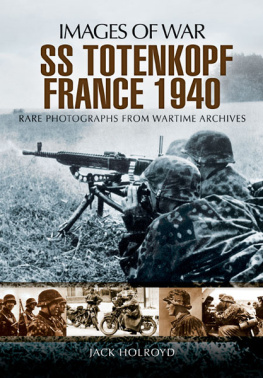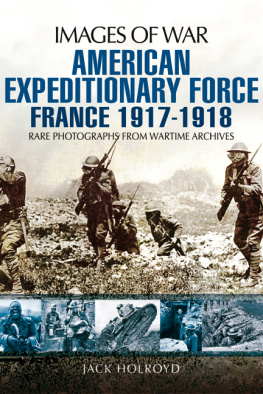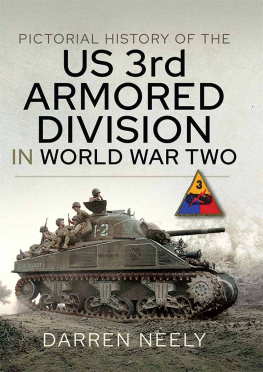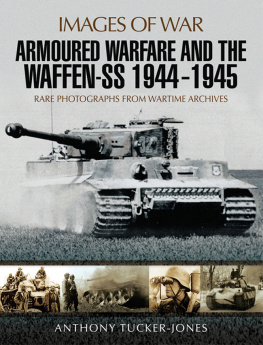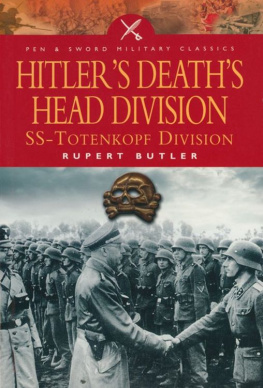
First published in Great Britain in 2012 by
P E N & S W O R D M I L I T A R Y
an imprint of
Pen & Sword Books Ltd,
47 Church Street, Barnsley,
South Yorkshire.
S70 2AS
Copyright Jack Holroyd, 2012
PRINT ISBN 978 1 84884 833 7
PDF ISBN: 9781783038923
EPUB ISBN: 9781783038947
PRC ISBN: 9781783038930
The right of Jack Holroyd to be identified as Author of this Work
has been asserted by him in accordance with the
Copyright, Designs and Patents Act 1988.
A CIP catalogue record for this book is available
from the British Library
All rights reserved. No part of this book may be reproduced or transmitted
in any form or by any means, electronic or mechanical including photocopying,
recording or by any information storage and retrieval system,
without permission from the Publisher in writing.
Printed and bound in Great Britain by CPI UK
Pen & Sword Books Ltd incorporates the imprints of
Pen & Sword Aviation, Pen & Sword Maritime,
Pen & Sword Military, Pen & Sword Select, Pen & Sword Military Classics,
Leo Cooper, Wharncliffe Local History
For a complete list of Pen & Sword titles please contact:
PEN & SWORD BOOKS LIMITED
47 Church Street, Barnsley, South Yorkshire, S70 2AS, England.
E-mail:
Website: www.pen-and-sword.co.uk
Contents
Introduction
A WARENESS of the dubious reputation of the Waffen SS came for me at the age of fifteen when an Estonian national came to work for a time at the small printing shop where I was serving my apprenticeship. It was 1953 and the most terrible conflict in world history had ended eight years earlier and Alvar Verlieht had a story to tell.
The Baltic State of Estonia had been invaded first by the Soviet Union in 1940 and was declared to be a Soviet socialist republic. Sovietization of the country on the basis of instructions from Moscow took place. Over 20,000 people, deemed to be a threat to the regime, were deported. Inevitably that oppression created determined pockets of resistence. When in the following year Germany launched Operation Barbarossa and took on the Red Army, the Wehrmacht drove through Estonian territory on its Blitzkrieg thrust towards Leningrad. Red Army attrocities against the people multiplied as Estonian men who had avoided the Soviet deportations fought alongside the Germans as guerrillas known as Metsavennad (Forest Brothers).
My Germanic-looking workmate, Alvar Verlieht, had once been a Forest Brother; now he was on his way to Canada to begin a new life. As a youngster brought up amidst the sights and sounds of formations of bombers overhead, air raid warning sirens, exploding bombs (on Sheffield), convoys of lorry laden soldiers driving through the village and the excited voice of the Path News commentator at the local cinema reporting on the progress of the war, I was fascinated by the real live ex-warrior who had fought on the side of Hitler.
The Estonian SS-Legion was formed on 1 October 1942 in the Debica military training camp near Krakow. Alvar told of how one day he and his fellow unit of Forest Brothers found SS uniforms had been laid out on every one of the beds in their billet. To a man they refused to don that uniform. They would carry on fighting the Reds as Estonian nationals and not as lackeys of Himmler. In the naivete of youth I recall asking why he and his fellow warriors had refused to wear that uniform seeing as how it was so distinctive and smart. He just smiled and shook his head and later I would know why. A reputation for sheer ruthlessness was becoming firmly associated with the Schutzstaffel. Some Estonians, who had at first welcomed the Germans as liberators, fled to Finland as it became all too obvious there was little to choose between Stalin's Soviets and Hitler's Nazis when it came to brutal oppression and frightfulness.
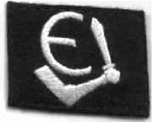
Collar badge of the Estonian SS-Legion.
The SS organization came into being in 1925 as an Assembly-Hall-Protection unit, it was intended as a security force for Nazi party meetings and as a personal protection squad for Adolf Hitler. Between 1929 and 1945 under the leadership of Heinrich Himmler it grew from a small paramilitary formation into one of the largest and most powerful organizations in the Third Reich. At the Nuremberg Trials in 1945 it was branded an illegal organization. Despite this, ex-members of the SS have continued to hold reunions and a strong bond of comradeship existed among them the Waffen SS. This work, based around photographs and captions from 1940, will hopefully serve to explain how the terrible reputation of this military organization that was about to strike fear throughout Europe, saw its birth during the invasion of the Low Countries in 1940.
SS Totenkopf
This SS Division was formed in October 1939, initially, from concentration camp guards of the 1st (Oberbayern), 2nd (Brandenburg) and 3rd (Thringen) regiments of the SS-Totenkopfverbnde, and soldiers from the SS-Heimwehr Danzig. Some officers from the SS-Verfgungstruppe had seen action in Poland. The division's originator and commander was SS-Obergruppenfhrer Theodor Eicke.
The Totenkopf had missed the Polish campaign and was initially held in reserve during the assault on France and the Low Countries in May 1940. They were committed to a front-line assault on the 16 May. Immediately, the politically motivated Totenkopf soldiers began to suffer heavy losses as they fought with a fervour and dedication in excess to that of their Wehrmacht comrades. The Division's first war crime was carried out within days of being committed to front line action. At the French village of Le Paradis the 4th Kompanie, I Abteilung, commanded by SS-Obersturmfhrer Fritz Knchlein, machine-gunned ninety-nine British officers and men of the Norfolk Regiment after they had surrendered to them. Two victims survived the massacre and managed to crawl away and surrender to a Wehrmacht unit. After the war, Knchlein was tried by a British Court and convicted for that war crimes. In 1948 he was sentenced to death and hanged.
Totenkopf saw action a number of times during the French campaign. To the north-east of Cambrai the Division took 16,000 French prisoners. Whilst subsequently trying to drive through to the coast they encountered a major Anglo-French force which they had a great deal of difficulty stopping and came perilously close to panic. Totenkopf, fighting alongside General Rommel's 7.Panzerdivision, had to resort to firing 88 mm anti-aircraft guns in an anti-tank role, and were saved by the intervention of Stuka dive-bombers. The Division went on to suffer heavily during the crossing of the La Basse Canal. Further stiff resistance was encountered at both Bthune and particularly at Le Paradis, hence the massacre of the Norfolks.
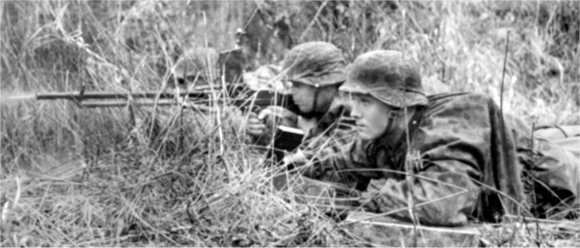
Early days for the new military formation: A Czechoslovakian BRNO LMG operated by men of SS Totenkopf during training prior to the invasion of the Low Countries in May 1940. TL/WW2 010
The French surrender found the Division located near the Spanish border, where it was to stay, resting and refitting, until April 1941. Totenkopf had suffered heavy losses during the campaign, including over 300 officers. Replacement personnel were supplied, this time via regular
Next page
